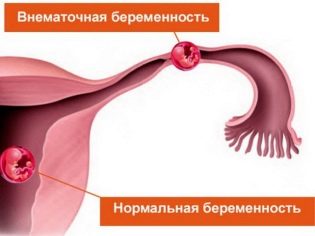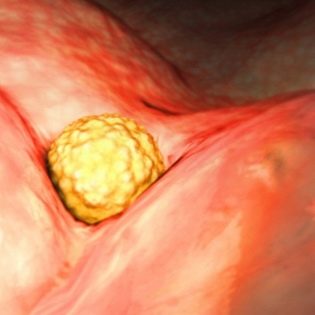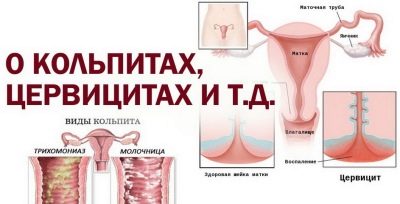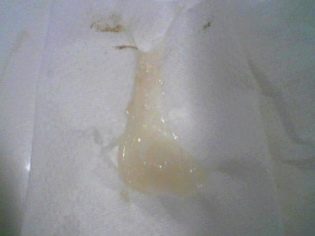What can be the selection during pregnancy?
During pregnancy, women carefully look at the discharge from the genitals. And for the future mother herself, and for the obstetrician-gynecologist who is observing her pregnancy, the excretions are an important diagnostic sign that can tell a lot about the condition of the woman and her baby. About what discharge during pregnancy is considered normal, and what - no, we will tell in this material.
Special features
Pregnancy excretions are the easiest and most affordable method of self-diagnosis. The vaginal secret for nine calendar months of carrying a baby is not the same, it changes depending on the processes that take place in the body of the future mother at one time or another.
Selections, which, in fact, are the secret of the vagina, are produced by the cervix, they are necessary in order for the genital tract to maintain a certain microflora, necessary for the normal process of carrying a child. By increasing or decreasing the secretion of a woman's body can react to hormonal changes, and the color of secretions and impurities in them will help to understand what is happening with the uterus, cervix and baby.
It is necessary to monitor the secretions throughout the pregnancy, any change in them, deviation from the norm should be a reason to talk with the doctorbecause most of the pathologies of pregnancy are manifested precisely characteristic discharge. To pay attention to changes in vaginal secretions in time, a woman should use daily thin sanitary pads from the very beginning of pregnancy.
The benefit from them will be twofold: on the one hand, the woman will prevent the occurrence of hygienic problems, on the other - she will always be aware of the type, color, consistency and nature of her own vaginal secretions, which will help both her and her doctor if he needs such information.
During pregnancy, vaginal tampons should not be used, no matter how good and comfortable they are. A vaginal secretion must be able to exit freely, without hindrance, otherwise stagnation may occur, which, if ingested by bacteria or fungi, will inevitably lead to a strong inflammatory process.
A woman should be clear that there is nothing unusual or shameful in observing the nature of the discharge; this is a completely civilized approach to planning a pregnancy and carrying a child. Do not hesitate to discuss your observations and ask questions to the attending physician, because only he will be able to understand when everything is normal, and when it is necessary to schedule an additional examination in order to find the root of the problem.
Let's look at what the normal range may be at the most different stages of pregnancy.
In the early stages, before the delay
Conception is possible only during ovulation. In the middle of the menstrual cycle, the woman's body creates the conditions under which sexual intercourse will be most productive. The woman has increased sexual desire, the perineum becomes more hydrated.During this period favorable for conception, the discharge is rather abundant, stretching, resembling raw egg white in consistency. This secret is produced by the action of estrogen.
The acidity of the vagina is thus somewhat reduced, so that the spermatozoa have a better chance of survival and a successful “journey” to the egg that is ready for fertilization. Thick, abundant and viscous secretions - a natural, natural "lubricant" that facilitates sexual contact.
If conception has happened, the first global changes will begin in a few days later - the hormone progesterone will unfold a large-scale preparation for the implantation of the ovum into the uterus. During this period, scant discharge is considered the norm, and this is how progesterone affects the cervix.
On days 8–9 after ovulation, there may be several bloodstains or small blood-like discharge. This is the so-called implant bleeding associated with the destruction of the small blood vessels of the endometrium of the uterus at the time of attachment to the wall of the ovum. Such secretions often go unnoticed by women. For many, implantation is completely bloodless.
Implantable bloody, blood-like or brownish discharge can be regarded by a woman as a hormonal failure, which led to the early onset of menstruation. However, menstruation usually becomes more abundant every day, and implantation discharge will disappear within a few hours or within 1-2 days. They are considered normal, they do not need treatment, they can be treated as the very first visual signs of pregnancy even before a delay.
A week later, a woman can confirm or deny her suspicions by making a pregnancy test. Already after 8–10 days after implantation (which corresponds to the first days of the delay), a pregnant woman, even at the most inexpensive pharmacy test, should have sufficiently distinct two strips.
Discharge before the delay and in the first days after it continues to remain scarce, progesterone does not contribute to the development of abundant mucus or a large amount of vaginal secretions.
Norm
First trimester
Two strips on the test - a reason to start to be more attentive to the changes occurring in the body. With each period of pregnancy, the discharge will change under the action of various causes.
This period is characterized by light, moderate, insignificant discharge, having no inclusions, impurities, and odorless. Acceptable color options are whitish, light yellow, transparent. Progesterone can give a slight yellowish tint to the vaginal secretion in the early stages. He does not allow the discharge was too much.
Normal discharge does not leave smearing marks on the daily strip. They are not accompanied by itching, soreness, discomfort in the perineum. If such symptoms are not observed, we can safely say that the health of the pregnant woman is all right.
On week 7-8, the discharge is normally a little more fluid than before. This is due to hormonal changes in the body.
By the 10th week of pregnancy, discharge may acquire a slight sour smell. It reminds of the smell of fresh kefir or sour milk. The smell should not be sharp, strongly pronounced. Moreover, the selection should not cause any discomfort in the future mother.
Second trimester
For this period of pregnancy is characterized by a significant increase in the amount of discharge. As soon as the placenta is formed in the body of the woman, and this happens by the 12-14 week of pregnancy, she has another, additional circle of blood circulation - the uteroplacental.
The amount of blood circulating in a woman’s body is significantly increasing, now it is growing by about 40%. Therefore, a woman sweats more, her kidneys and heart work more intensively.Discharge from the genital tract also becomes much larger.
Sometimes a woman is literally followed by a feeling of constant moisture in the crotch area. Together with the rush of blood to the genitals, the expectant mother begins to experience stronger sexual desire, her intimate life acquires new, previously unexplored shades and nuances (if sex is, of course, not prohibited by a doctor for medical reasons!).
Normally, in the second half of pregnancy, the discharge remains light, light yellowish shades are permissible. They are almost never transparent, usually the normal discharge in the middle of the baby’s term is whiter. However, the discharge should remain uniform, without lumps, mucus, clots, streaks. They may be somewhat more liquid than in the first trimester, but this is quite normal, as the body begins to prepare for the upcoming birth, clearing the genital tract.
By the end of the second trimester, women should be extremely attentive. Any changes in the nature of the vaginal secretion in these periods may indicate that the woman is threatened with premature birth. Only vigilance will help in time to respond, go to a medical facility and do everything to save the child and prolong pregnancy.
In the third trimester
During this period, excretions are an important diagnostic indicator. They reflect the majority of preparatory prenatal processes. So, because of the stretching of the ligaments that hold the large uterus in, a woman often has a stomach ache, and most pregnant women already experience training contractions, also called false ones. The underbelly at them sometimes kameneet, and then, after a few minutes, relaxes again.
A woman may begin to feel tingling somewhere deep in the vagina. This means that the process of preparing the cervix for labor is beginning. Neck ripening may be accompanied by an increase in the volume of vaginal secretions. Allocation becomes much more and now you can’t do without a daily sanitary pad.
In the third trimester, progesterone begins to give its leading place to other hormones, due to which labor should soon begin. First of all, the content of estrogen increases, the concentration of oxytocin increases. Because of this, the softening and shortening cervix begins to produce more secretion.
The normal color of late discharge is light. Valid white, whitish, yellow shade. Still healthy are the discharge without lumps and impurities, with the smell, like the smell of dairy products. As the cervix ripens, the cervical canal will expand, which during the entire pregnancy has been tightly blocked by a mucus plug. Its expansion will lead to discharge or partial waste of the mucus plug.
Therefore, it is not surprising that a few fragments of mucus appear in the discharge several days or hours before delivery. If the cork moves off at a time, then lumps of mucus with blood streaks or brown patches are clearly visible on the gasket. However, often the cork moves away not entirely, but in parts, and then the mucous discharge will be observed in the future mother for several days. These secretions are also considered normal, especially at 36-40 weeks gestation.
Closer to childbirth may appear watery, colorless discharge, more abundant than usual. A woman may feel that she could not hold a small amount of urine. This may be the beginning of the discharge of amniotic fluid, which, like the mucus plug, does not always go off at the same time in full, sometimes they leak a little over several days.
Such discharge also conditionally refers to the norm at 36-40 weeks of pregnancy.Baby on this term is fully viable, it can be born at any time. Watery discharge at this time - a sign of the beginning of labor activity.
The absence of the discharge described above at 39, 40, 41 weeks of pregnancy does not mean at all that a woman has to carry her baby. Vaginal secretion is a delicate, delicate and highly individual thing. Norms exist mostly only in the medical literature. In practice, things may differ. The secretion may not be abundant, and the cork and water will disappear simultaneously with the onset of labor or at the height of the first or second stage of labor.
If a woman is not bothered by anything, she has no acute pain, itching, bleeding, discharge with a strong and unpleasant smell, we can assume that she is all right. Do not miss the abnormalities will help timely visit the doctor, passing tests, including smears from the vagina and scraping from the cervix. A simple laboratory analysis will provide comprehensive information on whether everything is in order with the secretion of the genital tract.
Pathological secretions
Normal discharge rarely causes a lot of questions to expectant mothers. But deviations from the norm may well cause an impressionable and suspicious pregnant woman to start to get nervous and worry. Let's look at what a selection of pathological nature most often occur during pregnancy.
Bloody
This is the most dangerous discharge. Impurities of blood in the vaginal secretion should not normally be. The exception is a small blood discharge immediately after intercourse at a late gestation. Future mucous membranes of the future mother are looser, their slight trauma is not excluded when making frictional movements.
Such secretions quickly end, and after a couple of hours the daily lining becomes clean. In all other cases, the blood in the secret of the genital tract - a sign of alarming, and sometimes urgent.
Immediately, we note that a large range of colors belongs to the bloody discharge. This pink and brown discharge, as well as orange, scarlet, burgundy and others. All of them are considered bloody, because they are given color by red blood cells that have got into the secret.
In the early stages, bloody daub can be a sign of retrochorial hematoma, a partial detachment of the chorion from the uterine wall. The exact shade and intensity of discharge depends directly on the degree of detachment. However, the stronger the daub, the more favorable the predictions - the blood that has accumulated between the chorion and the uterine wall must find a way out, otherwise the detachment may continue until the embryo and miscarriage are completely lost.
Bloody, pink, brown discharge in the early stages and in the second trimester is a sign of a threatened miscarriage, and in the third is a sign of the risk of premature birth. The most dangerous blood secretions are scarlet, abundant, as well as blood with admixtures of clots. Such discharge at almost any gestational age may indicate a placental abruption.
The most at risk are women with low placentation, placenta previa, isthmic-cervical insufficiency, constantly or often elevated uterine tone.
Up to the 20th week of pregnancy, brown discharge with blood clots may indicate a miscarriage that has begun, a pregnancy that has stopped a few weeks ago, and which has just now begun to reject. Up to 9-10 weeks scarlet blood in large quantities in combination with severe unbearable pain in the lower abdomen can be a sign of ectopic pregnancy and the resulting injury (rupture) of the tube.
When bloody discharge of any intensity or shade appears, you should take a horizontal position in a comfortable position - on your side or back and call an Ambulance.
In 95% of cases, pregnancy with timely treatment can be maintained, the threat to stop, and the baby can be given every chance to be born in time with a healthy and strong toddler.
Purulent
Not only a characteristic sweetish smell, but also a color can tell about the presence of pus - usually it is greenish or yellow-green discharge. This group includes green, gray, and gray-brown discharge. Most often, they are associated with additional symptoms - pain, cutting when urinating, burning and an unpleasant smell, reminiscent of the smell of rotten fish.
Such discharge may occur at any stage of pregnancy. They most often speak about the presence of a serious infection - from a venereal disease to bacterial infection. Regardless of the time required, it is required to undergo examination as soon as possible, establish the infectious agent and start treatment immediately.
In the first and second trimester of pregnancy, the appearance of green discharge often indicates the presence of colpitis or cervicitis. Sometimes the reason lies in bacterial vaginosis. In the third trimester of pregnancy, a green discharge of a dirty shade may indicate the development of chorioamnionitis, an inflammatory process that captures the membranes. This is very dangerous for a child who may be infected in the womb. From intrauterine infection, the baby may die.
Infectious diseases of the urogenital system are several risk factors. The baby can be infected intrauterinely, and it can also become infected during the passage through the genital tract during childbirth. For an immature, weak immunity of a child, a bacterial infection can even be lethal, since innate passive immunity, which the baby gets from the mother, does not protect it from bacteria.
It is necessary to be treated, most likely, even with the use of antibiotics. For the effect of drugs on the baby do not worry. Doctors will select drugs that are acceptable in the treatment of pregnant women. Untreated sexually transmitted and bacterial infections can harm the little one much more.
Whites
As we have already found out, white and whitish discharge during pregnancy is the norm. But there are deviations, and a woman will suffer from abundant or scanty whiter and unpleasant sensations associated with them. Most often, white chalky discharge, in which a small plaque appears on the external genitals, is associated with fungal infection. Women experience dryness in the perineum, sometimes a slight itching, burning.
White discharge, which coagulates like coarse-grained cottage cheese and has a pronounced smell of yeast, is a well-known thrush known to most women. Candida fungi most often affect the reproductive tract of pregnant women. The thrush proceeds against the background of intolerable and constant itching, burning. She easily starts on the background of reduced immunity, characteristic of all expectant mothers.
Any bright or other discharge with itching is a reason to consult a doctor. The reason may be a banal violation of the rules of personal hygiene and the occurrence of vulvitis, which is easily and quickly treated with the start of proper hygiene procedures. However, it may lie in a more dangerous fungal infection of the genital tract, which will require specialized treatment.
Yellow
Yellow secretions may well be a variant of the norm, because progesterone gives such an unusual color to the vaginal secretion. However, it should be clearly distinguished between normal yellow and pathological discharge. Painful yellow discharge is always accompanied by additional discomfort - pain, pulling and aching sensations in the lower back in the early stages, as well as itching in the area of the external genital organs.
The causes of yellow secretions may lie in the banal allergic reaction to intimate hygiene cosmetics or soap. This often happens in women who abuse washing with soap and water. The alkaline environment of soap destroys the protective film of mucous membranes, dries it. Gradually, an allergic reaction begins.
It is important to prevent bacterial infection from adhering to it, since dried out membranes are a fertile environment for penetrating microcracks of the same intestinal bacteria.
Yellow discharge sometimes accompany the pathology of the cervix, as well as the threat of miscarriage or premature birth. In later periods, yellowish discharge of a watery character may indicate leakage of amniotic fluid. That is why it is important to be examined and find out the true cause.
Watery
Above, watery discharge in late gestation, indicating the onset of labor, was considered normal. However, watery, rather abundant secretions may appear earlier. Then they will not fit into the framework of the norm. Almost always watery discharge associated with the presence in the vaginal separated amniotic fluid, violation of the integrity of the fetal membranes.
Usually the appearance of such secretions is combined with other pathologies: intrauterine infections, which made the membranes vulnerable, the threat of premature birth or miscarriage.
Such secretions may also appear after invasive diagnosis, in which the integrity of the membranes is broken by a long needle puncture for taking material for genetic analysis.
When a watery discharge occurs, a woman should definitely inform the doctor as soon as possible. She will undergo an ultrasound scan with a mandatory measurement of the amniotic fluid index in order to determine whether the amount of water is sufficient for the further development of the baby. Vaginal secretions will be analyzed to determine if there is amniotic fluid in it. Only after that a weighted decision is made on the possibility of preserving pregnancy.
Mucous membranes
Mucus in the secretions may be present normally only as a manifestation of mucus plug discharge. All other options for the appearance of mucous clots - unambiguous and undisputed pathology.
A variety of inflammatory diseases of the uterus and its appendages, as well as pathologies of the cervix and cervical canal, can be accompanied by a small pink tinged mucus. All these diseases pose a serious threat to carrying a baby, and therefore should be examined and treated as far as possible in the shortest possible time.
Transparent mucus, which appeared after intercourse and a few hours after it, does not speak about pathology. Such secretions should be attributed to the variant of the norm - the dead spermatozoa and seminal fluid leave the female genital tract, there is nothing alarming in this.
After examination by a doctor
Small pinkish or brownish discharge after examination by a gynecologist is quite common and normal during pregnancy. Do not think that the doctor hurt and doubt his qualifications. The fact is that the inner surface of the vagina, already in the early stages, becomes more friable under the action of progesterone, the blood vessels are easily injured. Vaginal examination, especially if it was carried out using obstetric instruments, may well cause subsequent bleeding or blood-suckling discharge (daub).
Such discharges do not last long; within a day there is no trace of them left. In the later stages of pregnancy, when the doctor may need to examine the cervix for its maturity, an examination can provoke a discharge of the mucus plug, and then mucus with streaks of blood will appear in the discharge.
If the discharge after inspection lasts more than a day, you should inform the doctor about it, perhaps they have no relation to the examination, and the abnormal nature of the vaginal secretion is associated with the development of the threat of abortion.
Useful tips
To preserve the health of the genitourinary system during childbirth, and also to eliminate the development of pathologies of pregnancy, A woman should be aware of simple security measures.
- Do not change your sexual partner during your pregnancy.. With a long intimate life organisms partners tune on each other. With a new partner, a conflict may arise at the level of the microflora of the genital tract, which will make itself felt by the manifestation of an inflammatory disease. In addition, a new partner can infect a pregnant woman with sexually or sexually transmitted infections.
- Do not use intimate gels and lubricants during sex, they adversely affect the balance of microflora, which can lead to the development of vaginosis. Masturbate with great care: make sure your hands are clean, it is easier to traumatize the genital tract of a pregnant woman and bring in bacteria.
- Watch for intimate hygiene.. It should be daily and mandatory, especially in periods when an increase in vaginal secretion is the norm. Avoid contamination of the genitals. But when making water procedures, try to avoid the use of any soap, even the most "harmless" - children's.
- Do not experiment with intimate cosmetics., to eliminate any manifestations of allergies. If you feel dry, use sunflower oil or peach oil slightly warmed to your body temperature. Such care does not harm.
- Swimming in pregnancy in open natural waters (which is very useful for all expectant mothers), use a swimsuit with special antiseptic inserts in the area of the external genital organs, to further protect themselves from the penetration into the genital tract of pathogens.
- If abnormal discharge appears, do not have sex., do not lift weights, do not take any medications yourself, even if they used to help you well in the event of an alarm. A pathological secret of the vagina may have a completely different reason, and self-medication can only harm. Be sure to consult a doctor.
When you see atypical discharge for your period, be sure to try to remember everything that preceded their appearance - load, sexual intercourse, hot bath or a hike in bathhouse, long shopping, cold disease, etc. This will help the doctor quickly find the true cause of pathological changes.
How to treat thrush during pregnancy, see the following video.


















































